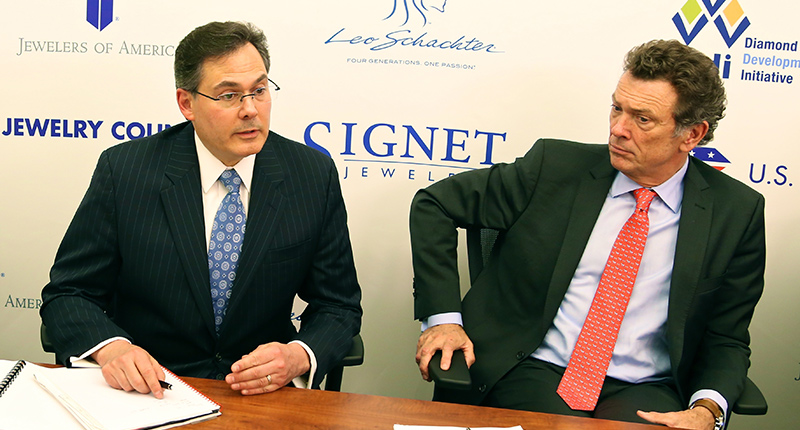Can the largest buyer of diamonds in the world vouch for its entire supply?
In 2000, when I first heard about the Kimberley Process, it seemed like it was attempting to achieve the impossible. “They are going to track every rough diamond in the world?” I thought. “How are they going to do that?”
The Kimberley Process is now 13 years old, and while we can spend all day talking about its strengths and weaknesses, it does track an overwhelming percentage of the world’s diamonds and has introduced a lot more transparency into the market than existed before. (Remember, pre-Kimberley, diamonds were regularly reported to be from Switzerland, a country with no mines.) It may not have accomplished everything architects envisioned, but it has led to a more transparent industry.
Now, it’s 2016, and Signet Jewelers has announced a new plan that will work toward ensuring all the diamonds it sells are sourced from identified and verified sources. Considering Signet is the largest buyer of polished diamonds in the world, with supply coming from all corners of the globe, that also seems like no mean feat.
Even the people behind Signet’s Responsible Sourcing Protocol for Diamonds admit change will not come about overnight. This is a “work in progress” with the goal of “continuous improvement,” said vice president of corporate affairs David Bouffard at a press conference yesterday at Jewelers of America headquarters announcing the protocol.
The new plan is complex, like the industry itself, and I will dive into its details in future posts. Broadly speaking, it requires Signet’s suppliers to report on their diamond sources and to have those assertions audited.
One issue, of course, is that while Signet has power over its suppliers, it has less power over its suppliers’ suppliers. So if a vendor doesn’t buy diamonds straight from the mine—and most don’t—the protocol requires it to conduct due diligence on, and receive assurances from, its supplier. But then that supplier may have gotten those diamonds from someone else. The industry remains sprawling, diverse, and scattered; particularly in India, a large percentage of the market is informal. That will be hard to track.


